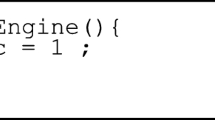Abstract
Investigators and malware creators are getting neck to neck in the competition and thinking of new deadly implements in their fields. Normally, malware such as viruses and others are detected by looking for a string of bits, which is present in the virus or malware. These strings are considered as the “fingerprint” of the malware. Malware creators are utilizing novel modern methods like metamorphosis to foil recognition instruments while security experts are sprouting better approaches to defy them. Today, virus scholars regularly cover their viruses by utilizing code confusion procedures with an end goal to defeat signature-based discovery plans. Metamorphic viruses are those in which their uses are slightly similar but they differentiate in their inner structure. Both metamorphic viruses and polymorphic viruses are different in the technique they use to concealing the mark. While metamorphic viruses conceal their mark by manipulating their own code, polymorphic viruses principally depend on encryption for signature confusion. In this paper, we have shown that we can bypass virus detection on different platforms (operating system). The authors have compared the three methods for bypassing the antivirus Veil–Evasion, Graffiti, code obfuscation and have uncovered their results. Eventually, we give our methodology to make any virus imperceptible utilizing various procedures.
Access this chapter
Tax calculation will be finalised at checkout
Purchases are for personal use only
Similar content being viewed by others
References
Infinity.wecabrio.com (2021) Download learning malware analysis: explore the concepts, tools, and techniques to analyze and investigate windows malware. http://infinity.wecabrio.com/1788392507-learning-malware-analysis-explore-the-concepts-to.pdf. Accessed 19 Jan 2021
Panda Security (2008) Creation of new malware increases by 26 percent to reach more than 73,000 samples every day, PandaLabs reports—Panda Security Mediacenter. https://www.pandasecurity.com/en/mediacenter/press-releases/creation-of-new-malware-increases-by-26-percent-to-reach-more-than-73000-samples-everyday-pandalabs-reports/ (accessed Dec. 29, 2021)
WonderHowTo (2021) Bypass antivirus software by obfuscating your payloads with graffiti. https://null-byte.wonderhowto.com/how-to/bypass-antivirus-software-by-obfuscating-your-payloads-with-graffiti-0215787/. Accessed 19 Jan 2021
WonderHowTo (2021) Hack like a Pro: how to evade AV software with Shellter. https://null-byte.wonderhowto.com/how-to/hack-like-pro-evade-av-software-with-shellter-0168504/. Accessed 19 Jan 2021
En.wikipedia.org (2021) Polymorphic code. https://en.wikipedia.org/wiki/Polymorphic_code. Accessed 19 Jan 2021
Scriptjunkie.us (2021) Why encoding does not matter and how Metasploit generates EXE’S. Thoughts on Security. https://www.scriptjunkie.us/2011/04/why-encoding-does-not-matter-and-how-metasploit-generates-exes/. Accessed 19 Jan 2021
Author information
Authors and Affiliations
Editor information
Editors and Affiliations
Rights and permissions
Copyright information
© 2022 The Author(s), under exclusive license to Springer Nature Singapore Pte Ltd.
About this paper
Cite this paper
Kaushik, K., Sandhu, H.S., Gupta, N.K., Sharma, N., Tanwar, R. (2022). A Systematic Approach for Evading Antiviruses Using Malware Obfuscation. In: Marriwala, N., Tripathi, C.C., Jain, S., Mathapathi, S. (eds) Emergent Converging Technologies and Biomedical Systems . Lecture Notes in Electrical Engineering, vol 841. Springer, Singapore. https://doi.org/10.1007/978-981-16-8774-7_3
Download citation
DOI: https://doi.org/10.1007/978-981-16-8774-7_3
Published:
Publisher Name: Springer, Singapore
Print ISBN: 978-981-16-8773-0
Online ISBN: 978-981-16-8774-7
eBook Packages: EngineeringEngineering (R0)




